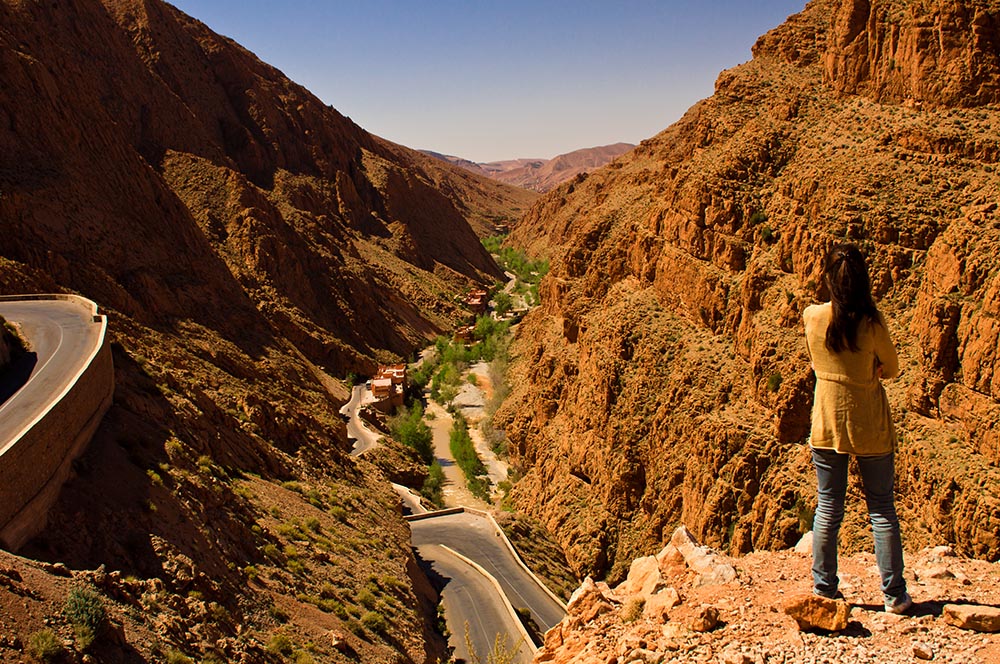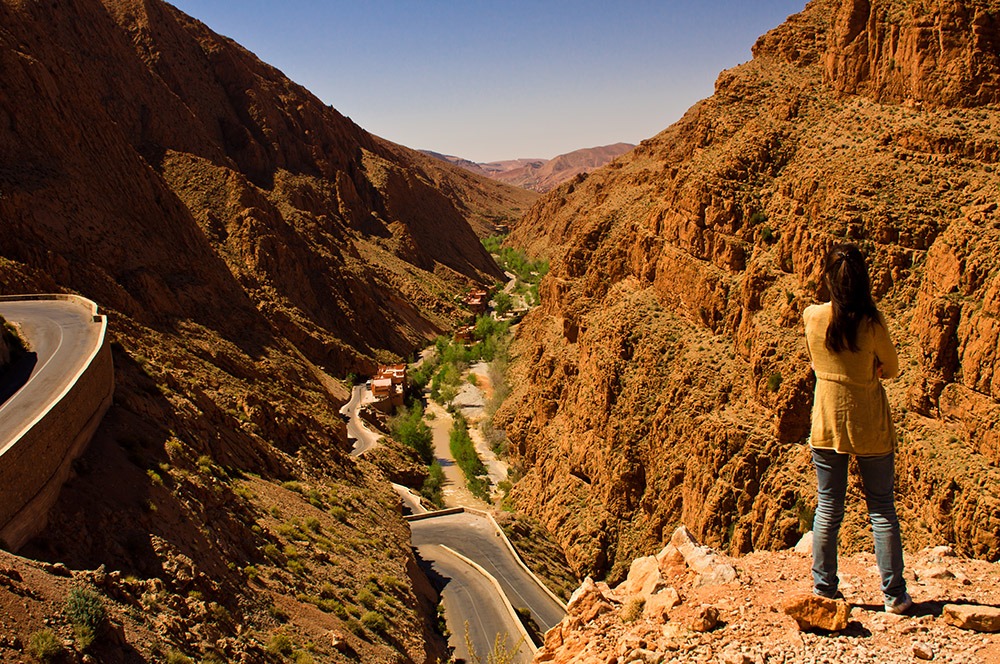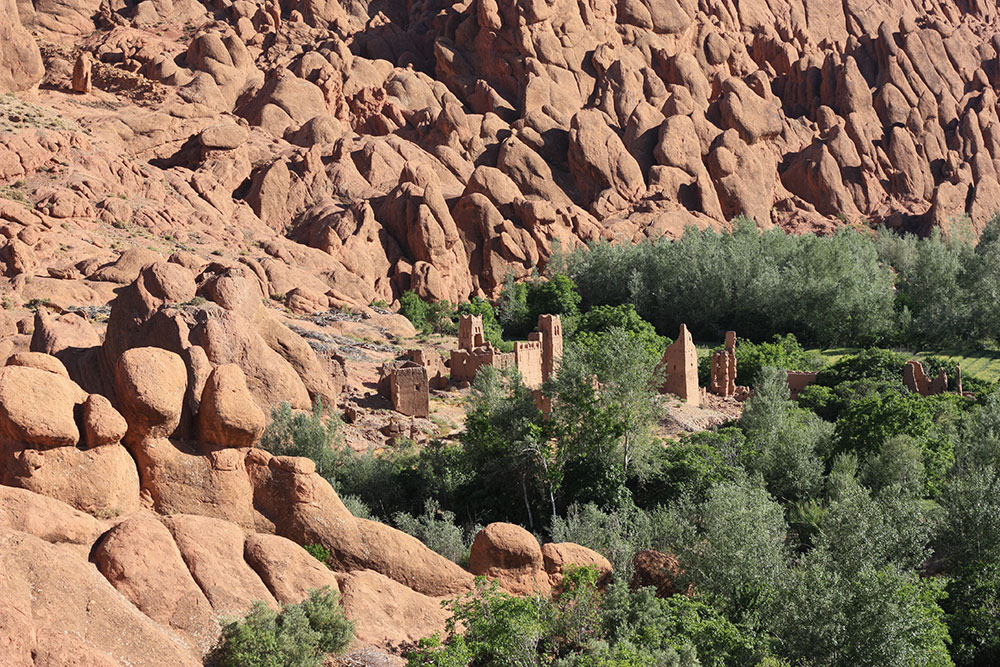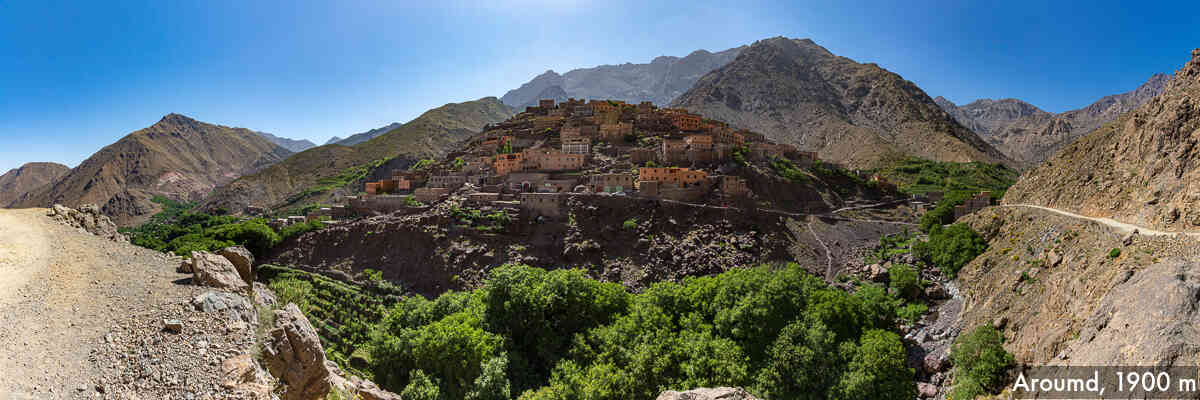When to go Walking, hiking and trekking in Morocco ?
If it’s your first visit to Morocco, then you will no doubt want to start in Marrakech. Marrakech is one of the four largest cities in Morocco and is the largest city of the south-west region, so is the best place to start if your planning to venture further south. The city is walled with the signature red sandstone reflecting the traditional style of the buildings within that continue the red stone architecture. This colour is providing a muted earthen tone as a base for all the
vividness of life here.
Where to begin your walking tour ?
Planning your walk around the city, there are many things you may program into your itinerary. You need to visit Marrakech Jemaa el-Fnaa this is the main square of Marrakech in the medina of the old city. The are many sights and attractions to see here, you will be impressed by the unfolding of a different scene, depending on the time of day you visit. During the daytime, you will come across the spectacle of snake charmers amongst the sellers of
fering juice and other refreshments. As the time passes, the snake charmers will slither away, and a new act of the show will enter the stage.
Chleuh dancing-boys, story tellers, magicians and peddlers of traditional medicines, scatter themselves amongst the milieu of locals and tourists. As the night falls, the food stalls begin to open to feed the mouths of the ravenous crowd. You can lose yourself in the chaos of activity, food vendors, restaurants, artists, musicians and circulate with the droves of people who have all come to soak up the atmosphere and enjoying the sights and sounds.
As a tourist, you will be approached by sellers to buy things so be prepared as this can be a little intense; remember that this is how they are making a living. So, either be open to making a purchase or politely recognise that they are simply doing a job to put food on their tables. I believe we should become more conscious as tourists. If you are visiting another culture as a luxury pass time, then respect the economy of the culture rather than complain and consider it a hassle.
Hiking in the mountains of Morocco
Another recommendation for walking in Morocco is the High Atlas Mountains. An easy drive from Marrakech, you can take a shared taxi that will have you in the heart of the mountains in around 90 minutes. Over the past few decades the Atlas range has been a growing f
ocal point for mountain tourism. There are many villages for you to visit and find a guide who can show your around the region. Hiking in the mountains is an inspiring adventure, it will test your fitness in comparison to the more leisurely walks around the imperial cities but anyone in good physical condition can get involved. There are many mountain passes and peaks that you can explore in the Atlas and Anti-Atlas ranges, if you book a local guide.
Jebel Toubkal is the highest peak in Northern Africa and is very popular with hikers and skiers due to it being accessible to people of all abilities. The recommended route to access this peak is from the mountain village of Imlil. Situated 65 km from Marrakech, this peaceful village has evolved to cater for the rise in mountain tourism, providing guides, accommodation, food and muleteers all there to make your walking trip more comfortable. From the centre of the village you can explore many different routes, Toubkal Mountain is the main attraction, but that doesn’t
mean the only one. If aiming for the summit is not your goal, then you can simply enjoy the surrounding landscape and take things at your own pace. A 2-day circuit hiking trip, is definitely worth planning into your trip and for the more passionate hikers, you can book a walking tour for up to 6 days, which would invite you to immerse yourself deep in the local culture and raise the bar on your walking experience.
Taking a tour of the peaks and valleys
You may also of heard about the well know peak, Jebel Saghro, in the Amazigh language the word Sayru (Saghro) means drought which is an appropriate name for this mountain as it is the driest mountain in the whole of the Atlas Mountains, this is due to is location. Being further inland, when the wind from the Atlantic blows in the humidity, the rain and snow fall hits the peaks which a further west. The lack of rain and moisture has left the landscape barren, and this is another contrast to what is seen elsewhere in Morocco. You can imagine how it must be to walk on the moon with the vast emptiness of this terrain. The Amazigh who live in this region are still semi-nomadic and migrate to Ait Bougemez (Paradise Valley) in the summer, heading their flocks of sheep and goats.
Another beautiful location to visit is the Azzaden Valley, a place which still holds all the authentic charm of the past. Climbing up and over the Tizi Ntacht pass, which is 2200 metres you will enter the valley and be able to hike across the deep ravine and through the terraces, which are still used agriculturally.
Continuing from the High-Atlas to the Anti-Atlas Mountains
If you are keen to continue to hike throughout the rest of Morocco, you can carry on your adventure to the Anti-Atlas Mountains. In this range of mountains there a several more peaks that you may wish to summit. Jebel Ouanoukrim is another mountain located to the south of Marrakech, it has the second and third highest peaks in the High Atlas range. North-east of Taliouine and south-west of Ouarazate you will find Jebel Sarho, a part of the Anti-Atlas Mountains. Jebel Siroua is another peak in Morocco also in the Anti-Atlas mountain range. It was formed from an ancient volcano that has risen from the earth’s crust. This peak is 3,304 meters above sea level, and is in the northwest of Africa, west from the High Atlas range separated by the valley of the Draa
Trekking in the Sahara Desert
Any walking holiday in Morocco would not be complete without visiting the Sahara Desert. Desert walking is a ‘must do’ experience and is such a dramatic contrast to the mountain tours, that the two together will be a compete unforgettable trip. For a real adventure, trekking in the Sahara cannot be beaten, it the kind of experience that you only imagine in the movies. It really is a true escape from civilisation, sleeping in tents and the vistas of endless desert, its beautiful vastness will be both awesome and challenging. Whilst trekking here you can search for fossils, raw crystals and the tombs of nomadic heroes.
The best times of year for trekking
With such a range of environments it is good to time you journey right as to not face a climate which is too challenging. The recommended times for hiking in the mountains would be April to May and September to October, trekking in winter can be challenging as the temperatures can drop well below zero in the heights of the Atlas ranges. In the desert the heat in the summer months is also to be avoided as this can prove too uncomfortable for most tourist. Spring and Autumn are good times to travel here, but you can still walk the desert throughout the winter months as well, although the night times will be cold.
Wherever you plan to hike, remember to book a local guide and pack you ruck-sac accordingly. If you are prepared for the climate you are facing, you will adapt and experience the fullness of your adventure.







